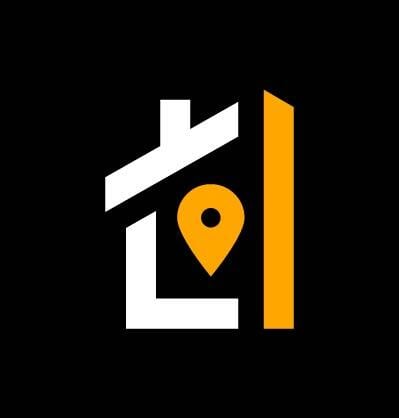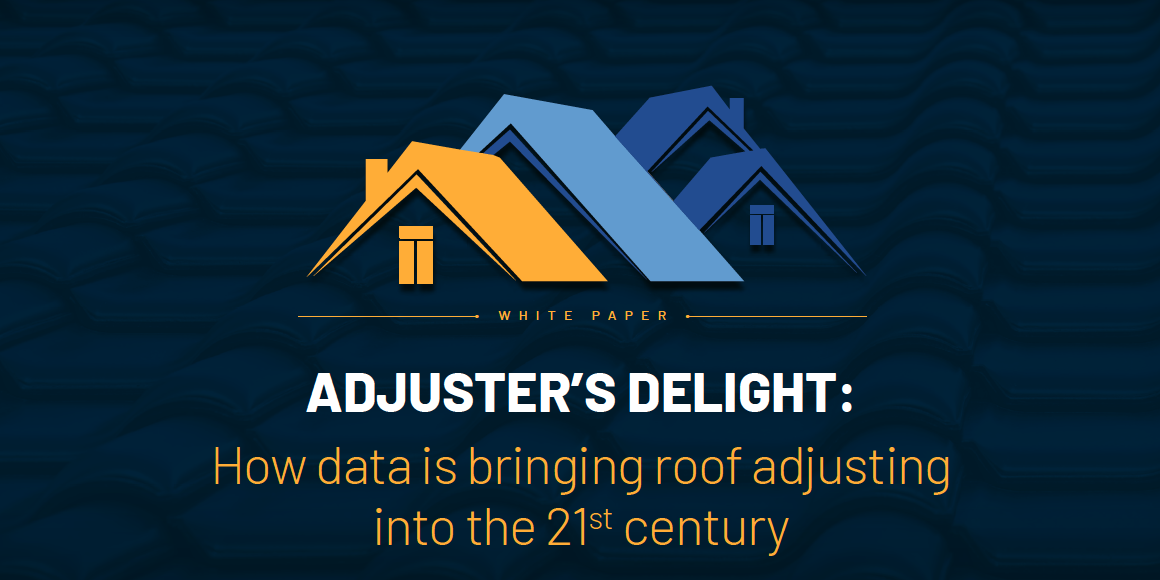
How roof adjusting data is bringing roof adjusting into the 21st century
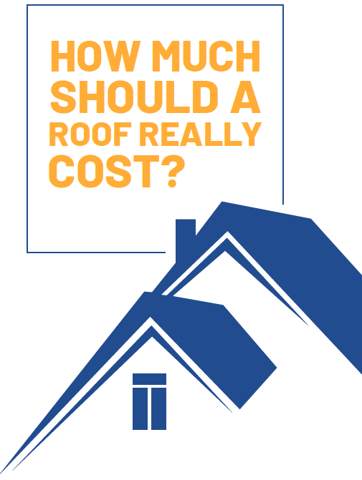
In 2020, the roofing claims process is broken. Online information
for quickly estimating the claim amount is non-existent.
Key pieces of information that need to be obtained for the average roof claim such as roofing codes, local tax rates and local permit fees still require a phone call to a local municipality to gather the accurate information. That costs millions of hours per year in wasted time for adjusters, contractors and municipal employees.
In the era of data and APIs, this type of inefficiency is incomprehensible and a major problem. It is a result of underinvestment in information digitization by local municipal governments throughout the US over the last twenty years.
The gap in readily available data leads to trust issues, increased settlement times, increased loss costs and less productive employees. It also creates frustration amongst contractors and adjusters who generally lack the time and training needed to do research that most of them do not want to do anyways.
With the revolution in digital automation of roofing data and roofing codes now upon us, claims departments can enjoy annual savings of tens of millions of dollars in both loss costs and loss adjustment expenses. Today it is more important than ever for homeowners, insurers, and property adjusters to consider adopting better tools and practices to counter the twin adverse trends of rising catastrophic storms and increasing roof labor and materials costs.
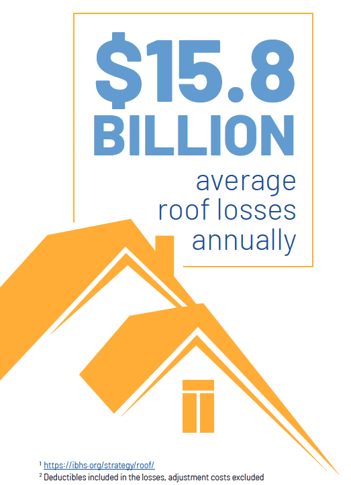 According to the Insurance Information Institute, annual homeowners’ losses in 2018 were around $55 billion dollars, while from 2013-2017, annual wind and hail damage accounted for just over 30% of all residential homeowner’s losses leading to homeowners losses from catastrophic damage of approximately $19 billion. According to the Insurance Institute for Business and Home Safety (IBHS)1, roof-related damage is responsible on average for an estimated 70-90 percent of total insured residential catastrophic losses.2 When using historical averages, a reasonable estimate for average annual roof losses is between $12.3 billion and $15.8 billion.
According to the Insurance Information Institute, annual homeowners’ losses in 2018 were around $55 billion dollars, while from 2013-2017, annual wind and hail damage accounted for just over 30% of all residential homeowner’s losses leading to homeowners losses from catastrophic damage of approximately $19 billion. According to the Insurance Institute for Business and Home Safety (IBHS)1, roof-related damage is responsible on average for an estimated 70-90 percent of total insured residential catastrophic losses.2 When using historical averages, a reasonable estimate for average annual roof losses is between $12.3 billion and $15.8 billion.
Despite huge investments in insurance technology over the last five years, multiple components of both the underwriting and claims processes in property insurance remain stuck in manual gear with uncertainties about how and when they will ever be automated. One of the most glaring such problems is processing roofing claims where local jurisdiction and codes are administered by municipalities that either cannot afford to make their data accessible
to the public or do not know how to do so effectively. The net result of this underinvestment is additional adjustment costs borne by the insurers as their adjusters and external contractors go back and forth endlessly to determine the right jurisdiction, roofing codes, and payment amounts.
Finally there is an easier way now available for both insurers and their partners to streamline the process, ensure that it accounts for local laws and ordinances, and achieve both lower loss costs and lower adjustment costs.
A VERY MANUAL PROCESS
Current information available through widely distributed estimating systems does not go far enough to provide key data needed to create an efficient and streamlined roofing claims process for both adjusters and contractors.
Hidden roofing codes, unknown jurisdictional authorities, complex manufacturer specifications, and numerous local tax rates and permit fees all contribute to inefficient processing of roof claims. Online municipal information is often outdated or non-
existent which means municipalities have to be called to get accurate information. There is also no guarantee that the information received from a local municipality is accurate either.
Additionally, the lack of readily available data results in transparency and trust issues, which contribute to increased hard and soft costs including but not limited to:

Imagine having to drive to the library to research, ask a librarian for help, wait for twenty minutes to two hours, and then have to repeat the process up to six times in order to find four data points of unique information critical to your everyday work. We all have gotten so used to the availability of information at our fingertips as the norm that we sometimes forget that these antiquated processes still exist and cause untold frustration for those still subject to them as part of their job.
DIGITAL CONVERSION OF CODE DATA
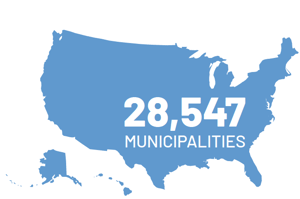
By digitizing the following key data for 28,547 municipalities in the United States, OneClick Code is pioneering automated roofing code identification and permitting processes:
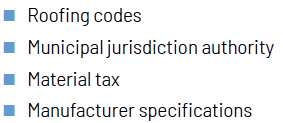
The resultant data set eliminates millions of hours spent by adjusters and contractors required in the claims process by putting the information where it belongs: at the user’s fingertips.
Claims departments responsible for settling roofing claims can enjoy enormous potential loss adjustment expense reductions and loss cost savings through quickly considering a very simple set of questions:
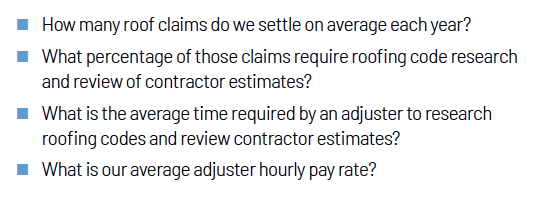
TIME IS MONEY
The process to research the roofing codes and review contractor estimates is more involved than it may seem, including but not limited to the following steps:

Altogether this typically requires just shy of 120 minutes (two hours) of the adjuster’s time.
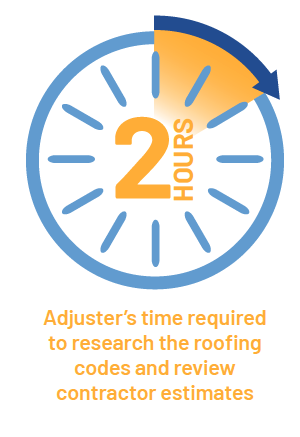
Moreover if there is a supplemental request by the contractor and it is denied in full or in part it may be requested again. Such an additional request can add anywhere from 30 to 60 minutes to the process each time an adjuster reopens a claim to review a supplemental request and it is not uncommon for this process to repeat three or four more times after the initial request. Associated labor costs aside, there is no real measure for the amount of frustration experienced by the adjuster or contractor in such a process. To fully appreciate that frustration, we recommend trying to work tomorrow without your mobile phone or computer.
Using a data driven solution instead, this entire initial process takes less than five minutes and any resubmission less than one minute resulting in hours of savings each time. It also eliminates or greatly reduces the frustration experienced by the adjuster and contractor during the initial submission and any subsequent reopening by the adjuster. Most importantly, a data driven approach provides defensibility for the position taken, eliminating ambiguity and underpinning acceptance by all stakeholders. Such clarity increases the fidelity of the indemnity process and by definition reduces the possibility of fraud.
JURISDICTION MATTERS
Data sourcing processes should be designed around
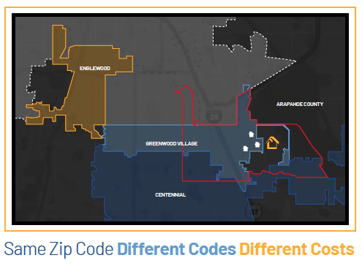
three key values/principals:
RELEVANT
Related to settling roofing claims
PRACTICAL
Straightforward answers to the most commonly asked and important questions (such as whether a local code requires a roof to include drip edge, valley liner, or iced water shield in eaves)
RELIABLE
Updated consistently to ensure accuracy
OneClick Code targets municipalities based on what the Census Bureau calls CBSA’s (Core Based Statistical Areas). A CBSA is a U.S. geographic area defined by the Office of Management and Budget (OMB) that consists of one or more counties (or equivalents) anchored by an urban center of at least 10,000 people, plus adjacent counties that are socioeconomically tied to the urban center by commuting. 95% of the US population lives within 919 CBSA’s which encompasses 1,811 Counties. Within those counties are a further 28,547 local municipalities. Of the 28,547 municipalities, 12,593 issue their own permits. The remaining municipalities require permits, however they submit to the Jurisdictional Authority of an adjacent Municipality or County to obtain those permits. Additionally, municipalities may choose to outsource permit processing to third-party private companies. OneClick Code
has developed a patented process for enabling the geolocation of an address in its geographically defined Jurisdiction of Authority in order to ensure data accuracy.
OneClick Code personnel contact each of the 12,593 permit issuing municipalities on an annual basis or semi-annual basis to collect and verify roofing code and sales tax data for digitization involving at least 3,000 different types of documents. Anytime there is a major storm (hurricane, severe storm, etc.), OneClick Code calls the local municipalities within 72 hours to ensure codes are updated for the ensuing claims process.
When working to find the correct sales tax estimation, it is important to know that there are often multiple rates per zip code, county, and/or city. Determining tax rates based solely on zip codes will result in inaccuracies. To ensure accuracy, it is necessary to pull the sales tax information based on an address’ geolocated latitude and longitude, and not simply the zip code or the city which can lead to incorrect input rates and a possible notice from the local tax collector.3
REPLACING ROOFS IS COSTLIER THAN EVER
In the last two decades, the combination of the rapid rise in severe convective storm (SCS) frequency and severity and skyrocketing roofing costs have created a toxic environment that is punishing homeowners and property insurers’ alike.
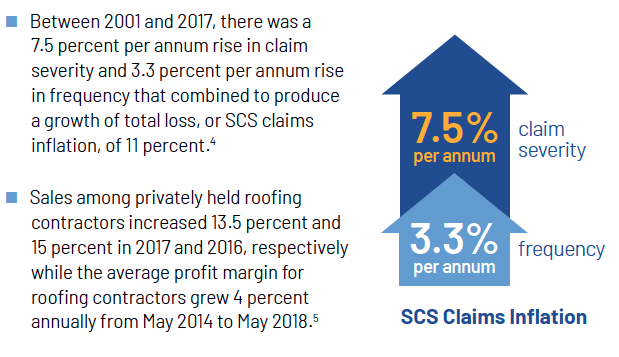
3 Avalara - www.avalara.com/us/en/learn/videos/whiteboard/sales-tax-rates-zip-codes-vs-geolocation.html www.avalara.com/us/en/learn/whitepapers/zip-codes-dont-mean-zip-for-ecommerce-sellers.html www.avalara.com/us/en/learn/whitepapers/zip-codes-the-wrong-tool-for-the-job.html
4 Risk Management Solutions - www.rms.com/blog/2018/08/03/us-severe-convective-storm-claims-going-through-the-roof
Incredibly in 2020, no one in the roofing value chain can confidently answer how much it should precisely cost to replace a roof. Below we highlight a hypothetical example of where an incorrect set of roof data inputs can swing the claim payout by 21%. Perhaps most astonishing in this example is the fact that the payment could be wrong in either direction, i.e. the insurer may end up paying too much or too little based on the data as depicted.
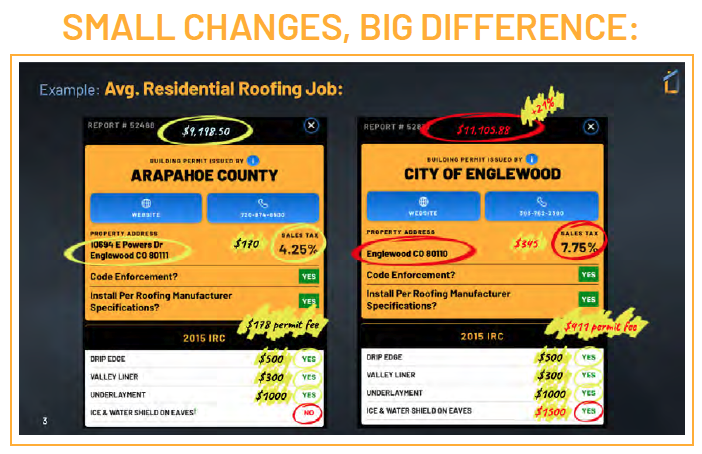 With savings in loss costs and loss adjustment expenses combined, the homeowners insurance industry could save over $1 billion annually while simultaneously helping their adjusters and contractor partners avoid frustration, save time, get clear answers and save out on recurrent overpayments due to systematic errors in code identification and managed services implementation.
With savings in loss costs and loss adjustment expenses combined, the homeowners insurance industry could save over $1 billion annually while simultaneously helping their adjusters and contractor partners avoid frustration, save time, get clear answers and save out on recurrent overpayments due to systematic errors in code identification and managed services implementation.
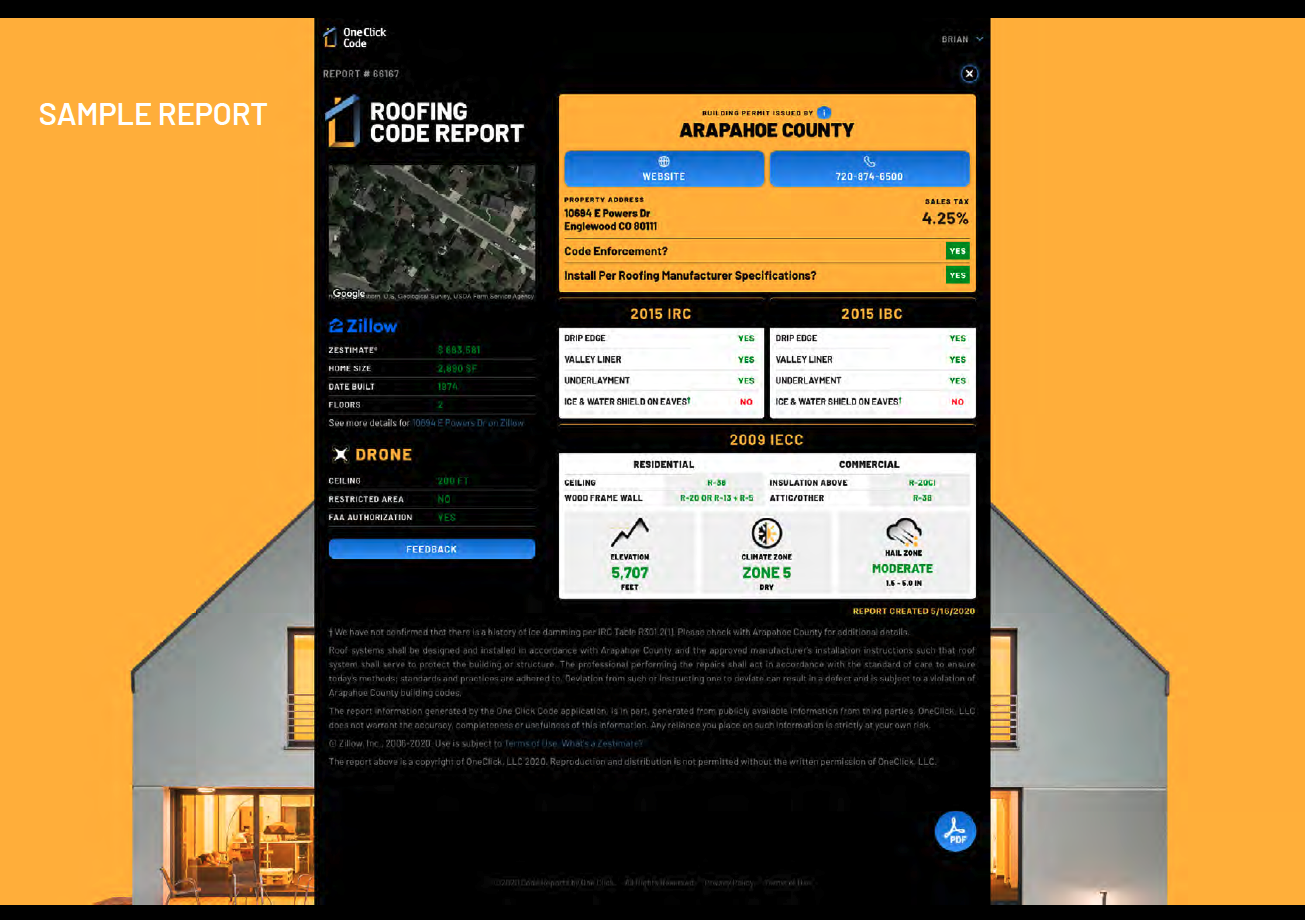
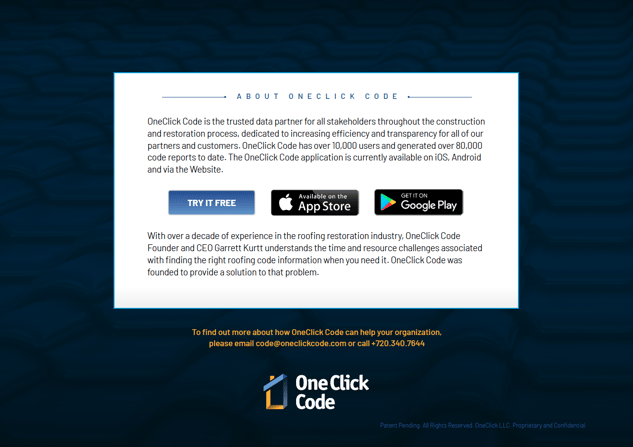
About OneClick Code
OneClick Code is a trusted data partner, dedicated to streamlining the code-sourcing process for all parties in the roofing industry while also increasing efficiency and transparency for all stakeholders in construction and restoration. They have the only platform to have blazed the trail for data automation of jurisdictional authority for building codes, permit fees, taxes, and manufacturer specifications required for any address nationwide. OneClick Code has been serving customers in the contracting, insurance, and claim adjusting fields by providing instant access to trusted roofing codes, in the click of a button. Offering unique reports that can be easily shared between all stakeholders in the roofing claims industry, OneClick is adding value to all parties and empowering customers to save time and money on every claim. Welcome to restoration intelligence, automated. To learn more, visit our website www.oneclickcode.com.
